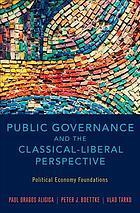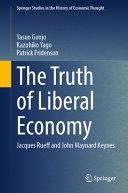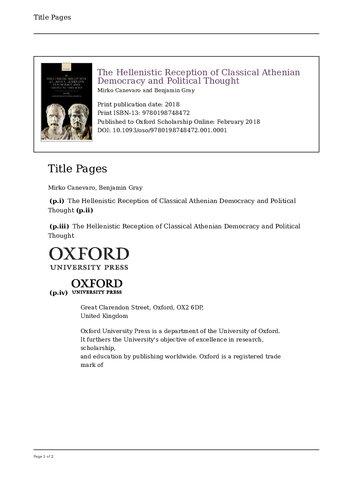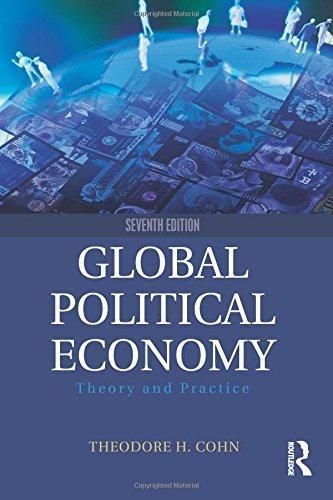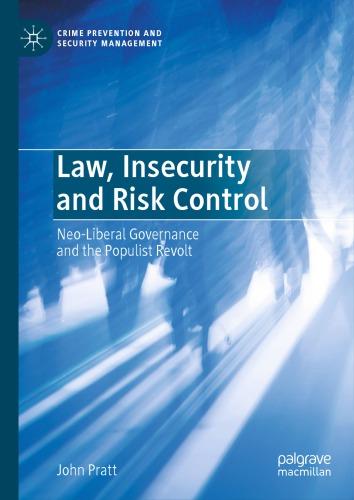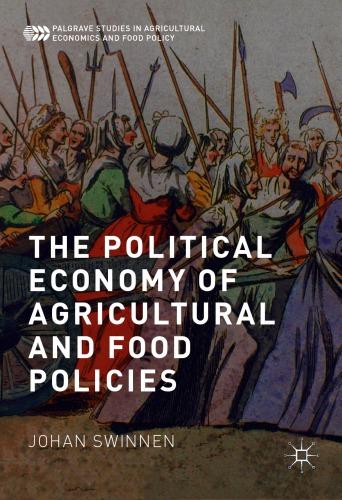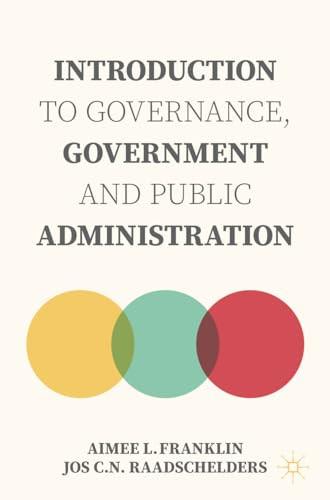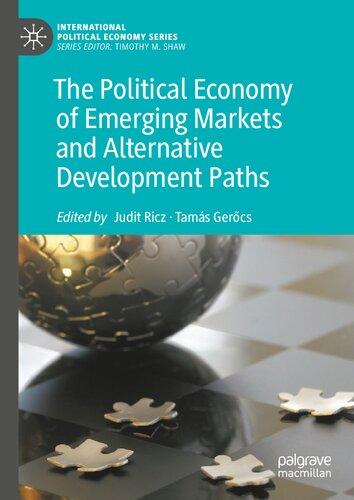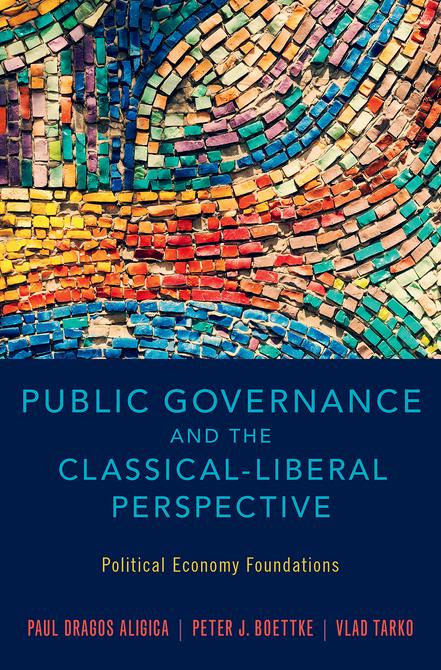Public Governance and the Classical-Liberal Perspective
Political Economy Foundations
PAUL DRAGOS ALIGICA
George Mason University and University of Bucharest
PETER J. BOETTKE
George Mason University
VLAD TARKO
University of Arizona
Oxford University Press is a department of the University of Oxford. It furthers the University’s objective of excellence in research, scholarship, and education by publishing worldwide. Oxford is a registered trade mark of Oxford University Press in the UK and certain other countries.
Published in the United States of America by Oxford University Press 198 Madison Avenue, New York, NY 10016, United States of America.
© Oxford University Press 2019
All rights reserved. No part of this publication may be reproduced, stored in a retrieval system, or transmitted, in any form or by any means, without the prior permission in writing of Oxford University Press, or as expressly permitted by law, by license, or under terms agreed with the appropriate reproduction rights organization. Inquiries concerning reproduction outside the scope of the above should be sent to the Rights Department, Oxford University Press, at the address above.
You must not circulate this work in any other form and you must impose this same condition on any acquirer.
CIP data is on file at the Library of Congress ISBN 978–0–19–026703–2
Printed by Sheridan Books, Inc., United States of America
Acknowledgments vii
Introduction 1
PART I A DISTINCTIVE PERSPECTIVE ON GOVERNANCE: THE BUILDING BLOCKS
1. The Classical-Liberal Theory of Governance 17
2. Function, Structure, and Process at the Private-Public Interface 40
3. Dynamic Governance: Polycentricity and Knowledge Processes 60
PART II PUBLIC CHOICE AND PUBLIC ADMINISTRATION: THE CONFLUENCE
4. Public Administration and Public Choice: Charting the Field 83
5. Public Choice, Public Administration, and Self-Governance: The Ostromian Confluence 101
6. Heterogeneity, Co-production, and Polycentric Governance: The Ostroms’ Public Choice Institutionalism Revisited 122
PART III FRAMING THE APPLIED LEVEL: THEMES, ISSUE AREAS, AND CASES
7. Metropolitan Governance: Polycentric Solutions for Complex Problems 155
8. Independent Regulatory Agencies and Their Reform: An Exercise in Institutional Imagination 171
9. Polycentric Stakeholder Analysis: Corporate Governance and Corporate Social Responsibility 189
Conclusions: Governance and Public Management—A Vindication of the Classical-Liberal Perspective? 209
Notes 217
References 249
Index of Authors 265
Index of Concepts 267
ACKNOWLEDGMENTS
This book summarizes the first stage of a project the authors developed under the aegis of the F. A. Hayek Program for Advanced Study in Philosophy, Politics, and Economics of the Mercatus Center at George Mason University. The volume synthesizes, draws on, and uses the following materials:
Aligica, Paul Dragos. “Public Administration and the Classical Liberal Perspective: Criticism, Clarifications, and Reconstruction.” Administration and Society 47 (2015). (We thank Sage Journals for permission to reprint material from this paper.)
. “Public Administration, Public Choice and the Ostroms: The Achievements, the Failure, the Promise.” Public Choice 163, no. 1 (2015): 111–27. (We thank Springer for permission to reprint material from this paper.)
Aligica, Paul Dragos, and Peter J. Boettke. “The Two Social Philosophies of Ostroms’ Institutionalism.” Policy Studies Journal 39, no. 1 (2010): 29–49. (We thank John Wiley and Sons for permission to use material from this paper.)
. “Institutional Design and Ideas-Driven Social Change: Notes from an Ostromian Perspective.” Good Society Journal 20, no. 1 (2011): 50–66. (We thank Pennsylvania State University Press for permission to reprint material from this paper.)
Aligica, Paul Dragos, and Vlad Tarko. “Co-production, Polycentricity, and Value Heterogeneity: The Ostroms’ Public Choice Institutionalism Revisited.” American Political Science Review 107, no. 4 (2013): 726–41. (We thank Cambridge University Press for permission to reprint material from this paper.)
Boettke, Peter J., Vlad Tarko, and Paul Dragos Aligica. “Why Hayek Matters? The Epistemic Dimension of Comparative Institutional Analysis.” In Revisiting Hayek’s Political Economy. Vol. 21 of Advances in Austrian Economics, edited by Peter J. Boettke and Virgil Henry Storr, 163–185. Bingley, UK: Emerald Group, 2016. (We thank Emerald Insight for permission to reprint material from this book chapter.)
Tarko, Vlad. “Against Gargantua: The Study of Local Public Economies.” In Elinor Ostrom: An Intellectual Biography. London: Rowman and Littlefield, 2016. (We
thank Rowman and Littlefield for permission to use material adapted from this chapter.)
Our special gratitude goes to the Mercatus Center and our colleagues at George Mason University. The list of those who offered us invaluable feedback and supported our efforts in multiple ways is large: Richard Wagner, Virgil Storr, Tyler Cowen, Dan Rothschid, Bobbi Herzberg, Stefanie Haeffele, Larry White, Don Boudreaux, Chris Coyne, Peter Leeson, Jayme Lemke, Ion Sterpan, Rosolino Candela, Arielle John, Solomon Stein, Jerry Ellig, Adam Thierer, Matt Mitchell, Dan Butler, Jennifer Zambone, and Eileen Norcross. Paul Lewis, Filippo Sabetti, Jerry Gaus, Peter Levine, Jim Johnson, Joshua A. Miller, and Jeremy Janow have been constructive critics of some of the key arguments advanced in this book. Many sincere thanks to all of them.
A draft of this book was the beneficiary of a book manuscript review conference held by the Mercatus Center in May 2016. We thank the Mercatus Center and the workshop’s participants: Sebastiano Bavetta, Roberta Herzberg, Bill Blomquist, Aurelian Craiutu, Charles M. Gray, Stephen Miller, Patrick Overeem, Hilton Root, Erwin Dekker, Arjo Klamer, Claire Morgan, Karol Soltan, Aris Trantidis, and Richard Wagner. A second manuscript review workshop was organized by the Mercatus Center in August 2018. We are grateful for the comments received then from: Brian Knight, Patrick McLaughlin, James Broughel, Jennifer Huddleston Skees, Oliver Sherouse, Brent Skorup, Adam White, Adam Theirer, Anne Hobson, Walter Valdavia, Jerry Ellig, Eileen Norcross, and Veronique de Rugy.
We gratefully acknowledge the help of our assistants, Eric Celler, McKenzie Robey, and Jessica Carges for helping us prepare the final version of the manuscript. Macey Fairchild and Preetham Raj have coordinated and managed with great care and professionalism the production process. We are thankful for all their efforts.
Our special thanks go to David Pervin at Oxford University Press. His patient and professional support for this project is gratefully acknowledged and appreciated.
All these colleagues, project partners, and friends are absolved from responsibility for anything imprecise, flawed, or controversial in this work.
Introduction
Pro-market ideas and skepticism toward the role of the state have had an undeniable influence on contemporary political debates. Sometimes on the offensive, sometimes on the defensive, they are a constant presence and a major point of contention in contemporary public discourse and public policy. How much should we trust the invisible hand of the market to produce socially desirable outcomes as opposed to trusting the political and bureaucratic apparatus of modern democracies?
Critics and supporters alike associate the origins of pro-market ideas and skepticism about government with the intellectual tradition of nineteenth- century classical liberalism. Rooted in the Continental and Scottish Enlightenment, classical liberalism used to be associated with labels such as “laissez- faire” and the “minimal state.” But these labels don’t do justice to and don’t accurately represent the views of prominent twentieth- century classical liberals like Friedrich Hayek or James Buchanan. A label like “laissez- faire” came to imply a mere faith in markets based on no analysis or understanding of the institutional and social environment of the market forces. However, classical liberals like Hayek and Buchanan have actually spent most of their intellectual energies trying to understand (a) the economic and political institutional framework that makes a society work well and (b) the social choice processes by which we can hope to constantly improve this institutional environment in the face of technological changes and other new challenges.
In one area in particular, the classical-liberal doctrine has lingered in semi-obscurity and underdevelopment. Its perspective on public governance, both its theory and its practical recommendations, is far from clear. Does classical liberalism entail a systematic framework of principles regarding public governance? If so, what are its broad recommendations and how does this perspective differ from other, more well-known perspectives on public administration? The answer seems elusive. Classical liberalism ascribes a larger scope to markets and a smaller one to government, but this is far from embracing an anarchist political philosophy. The evidence in this respect is overwhelming. Classical liberalism accepts a wide range of collective arrangements and activities ranging from certain types of regulation to the provision of specific public goods and even to specific welfare policies. As such, the question arises, within the range of government activities that classical liberalism accepts as legitimate, or at least not entirely beyond the pale, what are the particular classical-liberal views on the instruments and procedures of the administration of collective affairs? Does classical liberalism entail a distinctive point of view not only about what government should
do, but also about how government should work? What kind of doctrine of governance and public administration does classical liberalism inspire? Is it possible to reconstruct or piece together such a position using the existing literature and practice?
This book is a pioneering attempt to answer these questions. This volume presents a fresh analytical and historical perspective on the theory of governance embedded in the classical-liberal tradition. We articulate the elements of the classical-liberal position on public governance that recognizes and confronts the problems of collective coordination and administration in the public arena, as opposed to either circumventing those problems or imposing institutional designs and policy standards that are not in full accordance with the nature and structure of the relevant collective phenomena. This book thus fills a large gap in the academic literature, the public discourse, and decision makers’ and administrators’ understanding of the nature and management of the public sector. Our main objective is to overview, clarify, and elaborate the elements of a distinctive perspective on the problem of collective choice and public governance. Proponents of this perspective may call it “classical liberalism” and opponents may call it “neoliberalism,” but the label matters less than the distinctiveness of its conceptual system, its features, and the demonstrated or potential feasibility of its implementation.
To better situate this book in its intellectual context and to better illuminate its significance we need to note that, as explained in the following pages, the field of public administration—as a systematic approach to the problem of public governance— emerged as a distinct field at the end of the nineteenth century, when the demise of classical liberalism as a reigning political and economic paradigm made room for the modern developments that led to the emergence of the administrative state, the welfare state, and the totalitarian state.1 Hence, classical liberals did not participate in substantive ways in the intellectual development of public administration as a field. Later, in the second half of the twentieth century, when the revival of classical liberalism redefined the parameters of many public debates and public policies, the focus was overwhelmingly on criticism of the existing policies and administrative structures and less on the reconstruction of governance doctrines and institutional designs. Only limited attention was dedicated to the development of a positive doctrine of public governance.
In many ways the early development of public administration was an explicit rejection of classical liberalism. For example, Woodrow Wilson’s Congressional Government included an explicit rejection of the American constitution under the view that, in order to have a coherent public administration, the system of checksand-balances needed to be replaced by a hierarchical system with a single center of power and “will” at the top.2 This view became the underlining background assumption in the field of public administration, and led Vincent Ostrom to write The Crisis in American Administration and The Political Theory of the Compound Republic, partly as a defense of the constitutional vision of a polycentric system with countervailing powers. Furthermore, as we elaborate in the second and third parts of the book, more or less independently of the influence of Vincent Ostrom, the contemporary mainstream accounts of public administration are slowly, and thus far incompletely and inconsistently, rediscovering the importance, benefits, and challenges of a polycentric system of governance. Within this intellectual context, it is useful to
articulate a full-blown, self-aware, and coherent classical-liberal position on public administration.
This book is an attempt to respond to this challenge. The task is facilitated by the fact that, although a fully fledged classical-liberal doctrine of public governance has not been articulated and presented as such in the literature, several important scholars in the fields of economics, political science, and social philosophy have elaborated the key building blocks of such a doctrine. Our task here is hence more of a synthesis. At the same time, in the field of public administration, especially under its more recent avatars labeled “governance theory” and “public management,” a normative ethos focused on individuals, rather than predefined collectivities and classes, continued to be influential, with the practical challenges and constraints acting in many cases as a reality check at the applied level, reinforcing elements of this individualist ethos. All these influences had to be reflected sooner or later in both the practice and the theory of public governance. Our argument builds around all those contributions and elements, operating in the overlapping area of political theory, the field of public administration, and economics, an area that has been roughly associated with the idea of political economy, broadly defined. Hence the subtitle of the book.
The first part of the book identifies and presents the basic elements of a contemporary rendering of the classical-liberal take on public governance. These basic building blocks, heuristics, and principles lead to a distinctive intellectual system, with an underlying logic and specific properties. The objective of the first three chapters is to outline the logic, structure, and properties of this mode of thinking about public governance. This perspective differs in important ways from other possible modes of viewing, conceptualizing, and approaching the challenges of collective choice and collective action.
Chapter 1 introduces the basic egalitarian and individualist foundation to public governance in the classical-liberal tradition. At the most elementary level, the analysis is based on the repudiation of what Adam Smith called the “vanity of the philosopher”— the vanity of the elitist intellectual who believes that their own preferences take precedence over those of the “common” people. The “vanity of the philosopher” is associated with what others refer to as the “high-modernist,” “seeing-like-a- state” “synoptic vision” of social order and governance, according to which the state apparatus should be used to implement a privileged elite vision upon the rest of society. In contrast to this progressive, high-modernist approach, the classical-liberal position embraces normative individualism and its twin corollaries— freedom of choice and freedom of association.
Can we have a less elitist “synoptic vision”? The social choice critique of the use of a social welfare function as a presumably objective method for aggregating everyone’s preferences, which could then be used as a guideline for public policy, answers in the negative. As highlighted by William Riker in his classic, Liberalism against Populism, or, more recently, by Achen and Bartels in their critique of the “folk theory of democracy” in Democracy for Realists, there is no objective method for aggregating and centralizing individual preferences into a unique vision of the “common good.” At first glance, the “folk theory of democracy” seems to provide a way to avoid the elitist “vanity of the philosopher,” but the social choice critique shows it to be a naive and unsuccessful attempt. There is no way to avoid having to deal with the complex problems
of how heterogeneous associations form and try to influence policy. As such, the recognition of the insights brought by the public choice revolution in social and policy sciences becomes essential, as are the public choice caveats regarding the capacity of the modern state’s mechanisms to successfully generate the outcomes that many progressives want it to deliver.
To understand how modern states can be built in a way that allows people with diverse and contradictory views to coexist peacefully we need a more consistent use of the comparative institutional analysis approach in assessing institutional performance and failure. Markets, states, and “third- sector” institutional arrangements are all judged comparatively—and based on similar standards—in the context of how they actually function in the real world (as opposed to how they should function ideally in our utopian imagination).
These basic ideas are intimately connected and form a logically consistent package. They are: (a) normative individualism, (b) social choice concerns about preference aggregation and the public choice approach to these concerns, and (c) comparative institutional analysis.
For instance, once normative individualism is assumed, the social choice concerns and the public choice approach follow naturally. Once a public choice stance is taken regarding the institutional performance of a certain governance arrangement, comparative institutional analysis automatically becomes the default analytical benchmark. Once comparative institutional analysis is used, normative individualistic assumptions inevitably re-enter the scene, as one needs to avoid assessment criteria that arbitrarily privilege one point of view above others. In conjunction, these building blocks and the underlying logic connecting them define a distinctive and consistent position on public governance. Critics of our position should bear in mind those connections and the difficulty of picking and choosing among them. The elements come as a relatively tight package deal, and it is conceptually difficult to adopt only some elements of this package.
Chapter 2 builds on these foundational insights and takes a step closer to a more applied discussion. The preeminence of normative individualism and of the principles of voluntary exchange and association, as well as the institutional aspects implied in the intellectual system outlined in the first chapter, suggest caution in claiming the primacy of one particular governance or institutional form in a complex world of multiple trade-offs. A governance doctrine trapped in a search for pure forms of private organization or public organization, transfixed on ideal types of private and public, would be deficient both normatively and empirically. Chapter 2 shows how it instead makes sense to take an approach that focuses on the following: (a) the variety of real and possible institutional and governance arrangements at the interface between public and private, with areas of overlap and tension, as defined in various circumstances by the relevant social actors involved; and (b) the comparison of the feasibility and efficacy of those arrangements in delivering a variety of outcomes, out of which the preservation of life, liberty, and property are essential.
The most important shift in perspective that follows from this is emphasizing the dynamic nature of the relationship between the private and the public. To understand institutions and evaluate governance structures one needs to pay attention to the processes of their emergence and to possible obstacles hampering their adjustment and evolution.
Chapter 2 charts this dynamic territory, identifying a set of factors at work in shaping the public-private interface and the governance architecture that deals with it: the nature of the (collective) good or service; the technology available for producing the good or service and the mechanisms available for monitoring and enforcement; and the social context in which the good or service is provided, involving people’s preferences and beliefs. The logic of the classical-liberal theory of governance leads to a focus on process and constant adjustment, a philosophical orientation that is fully consistent with the realities of governance, as shaped by the nature of services, goods, technologies, and social context.
Chapter 3 is grounded in awareness of human fallibility, structural uncertainty, and historical contingency and proceeds on the assumption that both markets and governments may fail in their roles as social coordination mechanisms. Given the factors and processes discussed in Chapter 2, the question becomes: What conditions encourage the emergence of efficient public choice structures for the management of the private-public interface? To put it differently, how can we best encourage and help individuals to self-organize and associate at different levels, in ways that they see as most effective for realizing their individual and collective goals? This is not only a matter of normative individualism but also one of adaptability and resilience. An adaptive institutional system is needed for ever- changing circumstances: decentralized, flexible, and structured for learning and coordination, for the collective management of continuous change in communities in which heterogeneous and dynamic individual preferences and beliefs play a major role as drivers of change. This means a switch of focus is needed from formal institutional design to a better appreciation of heuristics. It is necessary to limit excessive concern with specific policies that target specific end states and focus instead on the institutional frameworks that shape the processes of learning and action in response to various challenges. Chapter 3 presents a set of key notions for framing and understanding this dynamic process and the phenomena associated with it in ways that are particularly relevant for governance analysis and design: the focus on process and dynamic governance reinforces the core idea of the voluntary action principle. The notions of countervailing powers, voluntary sector, and nonstate governance lead to the overarching and encapsulating idea of polycentricity, the governance keystone of the normative individualist system of classical-liberal inspiration. Along the epistemic dimension, we emphasize the role of discovery, aggregation, and distribution of knowledge in society, and the fact that these concerns are natural complements of the notion of polycentricity.
The first three chapters thus demonstrate that there is a distinctive intellectual approach that consistently converts a normative individualistic vision into a model of governance that materializes and safeguards that normative ideal. Using the relevant political economy and especially public choice insights generated by more than one hundred years of intellectual history, Part I thus outlines the theoretical building blocks and the applied-level parameters of the classical-liberal theory of governance. It is true that many of the elements that define this position may be found either separately or as subsets in different and other (more or less consistent) combinations associated with other perspectives. Yet when combined together, the entire set creates a uniquely coherent configuration. That configuration gives the distinctive perspective on governance that we associate with the classical-liberal tradition.
It should be noted that, although we are trying to articulate a classical-liberal position, traditionally considered as opposed to the public sphere and very skeptical to public administration, the argument has placed us at the core of the idea of public administration. We are talking about institutional arrangements through which societies structure and govern the public domain, about the portfolio of organizational instruments that people use to create and manage the public sphere. However, our approach is not one of going through the standard steps of building a theory of bureaucracy with models of hierarchy, authority, and social control. This does not mean that authority, hierarchy, and control do not have a role. They do indeed, but they are no longer the defining background. We now approach public administration from the perspective of choice, association, adaptability, learning, and resilience, focusing on the processes that take place at the private-public interface. The background framework has changed.
Part II turns to the public administration literature and its evolution. We look at the field, as it has evolved in its intellectual history, in an attempt to locate the relationship between the mainstream of governance and public administration scholarship and the classical-liberal theory of governance. The main objective is to show how the fields of public administration and public choice (who was the main carrier of the classical-liberal ethos in the social sciences at that time) converged in their evolution, in the 1960s, with the burst of the public choice movement in the larger arena. The focus is on the intellectual junction point and the developments at that confluence. The contributions of Elinor and Vincent Ostrom emerge as uniquely important. Working in both traditions—public administration and public choice— the Ostroms created an entire program aimed at their integration.
Chapter 4 documents those developments, charts the conceptual territory, and puts the Ostroms’ contributions in the context of the intellectual history of public administration. Identifying areas of convergence and affinities between the two intellectual domains, the chapter presents the Ostroms’ ambitious attempt to blend the two traditions into a distinctive type of public administration: democratic public administration. The “seeing-like-a- state” perspective in public administration is openly challenged by the “seeing-like-a- citizen” alternative in a field that, by the time the Ostroms started their program, was trying to unshackle itself from the inherent statism of its Wilsonian legacy.
Chapter 5 illuminates the specific nature of the synthesis attempted by the Ostroms and their associates and discusses the successes and the failures of their endeavors. Their efforts to promote the public choice perspective in public administration and the public administration perspective in public choice were aimed at engendering a paradigm change from bureaucratic public administration to democratic public administration. These efforts are presented here as a reference point, a model, and a case study entailing several lessons about the nature and limits of such endeavors. We also build upon the work of Michael Spicer, a remarkable author who has kept alive this type of approach in the field of public administration by combining public choice and knowledge process theory, long after the initial effect of the Ostroms’ efforts faded.
Chapter 6 further elaborates the conceptual apparatus emerging from those efforts, especially the pivotal notion of polycentricity, as a unifying and organizing framework for governance theorizing. The Ostroms crafted the basics of a systematic
approach to institutional hybridity, diversity, quasi-markets, and quasi-governments, and they spelled out the logic that unites those ideas into a comprehensive theoretical system. Recognizing that their system is still a work in progress, Chapter 6 tries to reinforce the emerging theoretical framework in three major ways: first, by explicitly articulating the elements of a theory of value heterogeneity as a foundational component of the entire approach; second, by clarifying a technical ambiguity in the construction of the co-production model that connects the domain of individual subjective values with the domain of institutions and social order and elaborating the implications; and third, by reconsidering the issue of polycentricity, the capstone of the Ostromian system, in light of the first two points.
The chapter advances a fresh elaboration of the notion of polycentricity, seen as a solution to both the co-production problem and the problems of social choice in conditions of deep heterogeneity. We emphasize several critical features that pertain to both its positive-analytical dimension and the normative one. The relevance of polycentricity as the key framework of the classical-liberal theory of governance is thus reasserted and reinforced.
Part III is an attempt to illustrate more concrete applications of the concepts, principles, and theories that define the distinctive governance theory described and elaborated in this book. This part takes another step in the applied direction. Seen in conjunction, the cases explored in Chapters 7–9 show how governance problems can be thought of using the intellectual instruments introduced in the first two parts of the book. The three issue areas discussed—metropolitan governance, independent regulatory agencies, and corporate social responsibility—are positioned at the sensitive interface between the private and the public, and each illustrates a different facet and challenge of governance in conditions of complexity and hybridity.
Chapter 7 focuses on the problems of metropolitan governance, one of the first domains in which the polycentric theoretical lens has been applied. The example of police services is used as an overture, as the chapter revisits the field and the literature fifty years after the Ostroms were involved in the metropolitan reform debate and launched their program. Further elaborations and new insights are presented. The public choice institutionalist polycentricity-based perspective is applied, illustrated, and expounded at a concrete level.
Chapter 8 explores the issue of independent regulatory agencies. Independent regulatory agencies are a serious challenge to democratic administration. They are government organizations of unelected officials who often resist even mild attempts to conduct an audit, and they are vulnerable to corruption, rent- seeking, regulatory capture, and revolving-door problems. The chapter first notes why independent regulatory agencies may nonetheless respond to genuine needs. Namely, they are a way of addressing controversial problems that are hard to decentralize. The common solution proposed by most critics of the regulatory state, namely to return to the legislature the rule- creation responsibilities now ascribed to independent regulatory agencies, seems to be not very promising in most cases. Legislatures lack the relevant knowledge and bringing such matters into the realm of everyday political swings would create too much regime uncertainty. But, although the critics of the regulatory state may have provided few viable alternatives so far, their arguments are still powerful and not easily dismissed. The chapter uses classical-liberal governance theory and the
institutional imagination associated with it to offer a better understanding of the operations of independent regulatory agencies and their possible improvement. An in-depth look questions the conventional wisdom regarding independent regulatory agencies and their functioning in the larger architecture of contemporary governance systems. Imagining alternative arrangements that may reduce deficiencies and improve performance illustrates the classical-liberal approach at work in one of the most complex and difficult areas of public governance.
Chapter 9 pushes the frontier of the discussion into a new, growing, and controversial governance debate area: corporate social responsibility. One of the most sensitive issues in polycentric governance systems, with their hybrid institutional arrangements at the dynamic interface between the private and the public, is that of specifying what are, and what are not, the responsibilities of the private sector— business firms and enterprises— with respect to the public domain. The chapter offers an exploratory attempt to address this challenge. Corporate social responsibility has emerged in the past several decades as a preeminent concept and an issue area that engages the problem of the public role of private businesses. The literature has grown around the notions of social responsibility and stakeholders and thus presents both a challenge and an opportunity for the governance perspective articulated in our book. Chapter 9 demonstrates how the ideas and theories discussed combine, complement, and bolster the literature and the associated applied-level insights.
Each of the three chapters in Part III challenges aspects of the conventional wisdom while putting to work the concepts of polycentricity, public choice, knowledge processes, countervailing powers, and freedom of association. In conjunction, they show that the classical-liberal perspective articulated here is able to offer a coherent, imaginative, and constructive approach to a set of tangible governance challenges.
We conclude the book by documenting an intriguing phenomenon. It turns out that the clearer the articulation of the classical-liberal perspective on governance, the more we discover that there are parallel and independently developed attempts to define and implement akin approaches already out there. Those similar approaches do not identify themselves as “classical liberal” and do not follow from the traditional classical-liberal conceptual underpinnings or intellectual genealogy. Such convergence from different and quite distinct ideological directions gives credibility to the claim that these proposals are not merely ideological wishful thinking but capture possible areas of consensus rooted in a realistic scientific understanding of the problems at hand. We conclude our argument with the observation that contemporary governance theory and practice seem to have moved increasingly closer to some of the core ideas of the classical-liberal perspective on governance; therefore, it is fully justified to contemplate this perspective as a coherent intellectual package based on a specific set of normative assumptions.
Three potentially controversial matters must be addressed before moving ahead to the more substantive discussion. The first is related to use of the term classical liberalism and the idea of associating our intellectual effort with the stance designated by the term. As some reviewers and commentators of our manuscript have argued, the use of the term classical liberalism may be detrimental because it introduces unwanted and unneeded ideological luggage. In fact, our book, they say, is an argument that shows how a combination of normative assumptions and institutional design
and empirical insights leads to a distinctive view about the nature of effective and desirable governance principles and practices. Why do we not simply stick to that, in itself a noteworthy contribution? Why do we need the ideological tangent? One may argue that the label is irrelevant. Why do we not simply label it in a neutral way (“Governance Theory X,” for instance) and move ahead without looking back?
This may indeed be a convenient approach, especially given the current ideological climate in academia. Yet, there is value in recognizing the existence of a long intellectual history and an already established tradition. The programmatic normative individualism and the associated intellectual and institutional apparatus meant to reflect and protect it are not something new. As noted, there is an internal coherence in this tradition—an underlying logic connecting its parts. Once normative individualism is accepted as a political axiom— the preferences of the individual members of a society should be the ultimate legitimizing force and the driver of governance systems—and once there is an understanding of the profound problems posed by the aggregation of those preferences into social welfare functions, then a particular governance theory and a certain set of political practices must be accepted. The history of the classicalliberal tradition is the history of this logic unfolding and becoming clearer and more explicit in time. It is not our invention. We are participants and contributors to this development, and we are not interested in pretending to be more original than we actually are. There is an entire intellectual history behind the insights we elaborate in our book, and it needs to be acknowledged as such.
Moreover, because we are not concerned here primarily with the history of thought, we do not do justice to the rich elaborations that exist in this long tradition. If readers are intrigued by our account, they may want to delve further into that rich history of ideas, which in many ways provides neglected insights. We cannot and do not want to obscure this long tradition. On the contrary, we want readers to engage more with it. The specific history of ideas, which sometimes progresses and other times leads to dead ends and detours, matters. The evolution of those ideas, their ups and downs in the public arena, their mutations, are part and parcel of the governance process we try to chart and elaborate. Some of these ideas have emerged from or have been applied to governance practice. The interplay of ideas and institutions and the learning from different events and from different environments and historical circumstances have shaped the classical-liberal thinking about governance. In the end, history matters. Separating current governance ideas and doctrines from their roots—for epistemological or ideological reasons— would lead to a diminished and impoverished understanding. At a minimum, we have the obligation to evoke and remind our readers of the existence and relevance of this history. The simplest way to do so is to use the label that comes closest to evoking it. Therefore, although we understand and appreciate the concern that using the term classical liberalism so saliently in our arguments may distract or even repel some readers, we think that intellectual probity and intellectual effectiveness make its use inescapable for the type of scholarly enterprise we engage in this book.
The second potentially controversial element is related to the place that the Ostroms’ work has in the argument, narrative, and conceptual reconstruction attempted here. We anticipate the following question: To what extent is there justification to associate the classical-liberal label to the Ostroms’ work or to aspects of their work?
A discussion about public governance today, in the aftermath of the public choice and institutionalist revolutions, must deal sooner or later with Ostroms’ contributions, as both of them were past presidents of the Public Choice Society and a constant presence there, for a long time and from its very beginning. Their contributions were pivotal to the intellectual history of governance in the twentieth century, and our own project is significantly indebted to their perspective. The Ostroms’ democratic administration, as an alternative to both bureaucratic administration and the radical new public administration, stands, with its Madisonian and federalist reverberations, at the confluence between the fields of public choice and public administration as a bearer of a deeper and broader social philosophy encapsulating both positive and normative elements.3 It is also impossible to avoid noticing the general normative orientation and genealogy of the public choice program out of which the polycentricity and public economy research agenda of the Ostroms has emerged. Normative and methodological individualism and the self-governance ideal are some of the key features.4 Notwithstanding some recent dubious claims, it is not difficult to document (as we do in Chapters 4 and 5) the ways in which the Ostroms’ work was received, as well as the ways in which the underlying social philosophy of their message was perceived and branded by mainstream scholars in the field of public administration. This all points toward a certain profile. The clustering of features goes preponderantly in one direction. All we do here is to recognize this reality and take the argument from there to where its logic leads.
We do not even want to claim that this social philosophy should be seen as exclusively classical liberal, and we do not insist on calling the Ostroms classical liberals. It is true that, especially in the work of Elinor Ostrom, a certain communitarian sensibility is also present. Hence, we do not deny the hypothetical possibility that someone might attempt to reconstruct the Ostromian theory of polycentricism and self-governance as part of a different system, with different assumptions, different implications, and a different ideological flavor. We have not seen that done so far, and we are hard pressed to imagine how a system predicated on normative and methodological individualism and on the importance of social and institutional diversity could have an orientation very different from the one identified in the pages of the present book. Yet, we keep an open mind and want to leave the issue open for investigation. It is undoubtedly the case that the Ostroms have been far more interested in descriptive and scientific accuracy than in fitting into a predefined ideological position. At this point, all we claim is that the Ostroms’ contributions are fully compatible with the classical-liberal tradition and obviously overwhelmingly rooted in it. In addition, we claim that the Ostroms’ contributions provide an excellent vehicle or basic structure for updating and advancing a contemporary version of a governance theory in the classical-liberal tradition. We are confident that the Ostroms would not have opposed the use of their work as a source of inspiration, benchmark, vehicle, or building block for the development of governance theories and approaches in any tradition compatible with the ideals and values of self-governance.
Consider the following account by Vincent Ostrom in a letter to James M. Buchanan dated October 10, 1977:
We are . . . confronted with the puzzle that the market may derive solutions where no one is concerned with maintaining the institutional integrity of a market, including the security of property rights, enforcement of contracts, and the community of interest which market participants share in common. The institutional provision of a market as such is of the nature of a public good (i.e., subject to joint use where exclusion does not apply) even though market participants engage in the exchange of private goods as they make use of that joint facility. . . . The cross pressures affecting market transactions and moral communities may mean that each is subject to serious weaknesses implied by the operation of the other. Perhaps one way out of the puzzle is to follow the federalist approach and recognize the potential for multiple communities sharing diverse sets of values. Unless we get the appropriate mix we may be in trouble.5
Thus, the big picture is concerned with a combination of the following difficult issues: (a) the fact that the institutions that underpin markets, and hence secure long- term development, appear to have some aspects of a public good and thus can be vulnerable to the typical free-rider problem; (b) the tension between the market’s amoral nature— which delivers anything for which there is enough demand and hence caters to a wide variety of conflicting preferences—and people’s conflicting moral judgments— which allow them to condemn various things that markets amorally deliver; and (c) the tension between the benefits of self-governing decentralization that allows people the freedom to associate with others who have similar moral views and hence allows small communities to regulate markets according to a variety of moral beliefs and the benefits of creating large- scale unrestricted markets that tend to undermine the capacity of local communities to preserve their moral and aesthetic idiosyncrasies.
In the same letter, Vincent Ostrom notes that survival of the system ultimately depends on people maintaining a broad understanding and appreciation of the liberal principles that justify the system. Unfortunately, that understanding has come under heavy attack from both Keynesian progressivism and nationalist neomercantilism:
Constitutional principles do not work by themselves but depend upon the shared beliefs and shared values held by the members of a community that has recourse to particular types of political settlements. The instruments don’t work unless activated by people who know how to make proper use of them and who appreciate their limits. It is precisely this set of beliefs that has eroded under the force of logical positivism where political phenomena are treated as though they were natural phenomena rather than artifacts created to serve human purposes. Thus, the political theory of the Founding Fathers had important normative components: justice was an important value to be realized and if essential characteristics of the human animal were not taken into account, justice could not be realized. The neo-mercantilism inherent in Keynes and the new Leviathan inherent in the assumption that the President knows best, simply leave us morally defenseless. . . . To the
extent that we feel that we can contribute to a revival of constitutional understanding, it seems to me that we also shall be contributing to a moral regeneration of a society that begins to appreciate that we can never have the best of all possible worlds.6
As such quotes show, affinity to the classical-liberal philosophy is hard to deny. And, needless to say, Vincent Ostrom’s concern is still with us today and is perhaps even more acute than it was forty years ago. As noted in his letter to Buchanan, Ostrom placed his hopes in preservation of the “federalist approach,” according to which we “recognize the potential for multiple communities sharing diverse sets of values.”7
This leads us to the third and last potential controversial issue, one related to the concept of polycentricity, a concept first used programmatically by Michael Polanyi and one that has come to play a key role in our argument. The theory of governance that we develop in this book as part of the classical-liberal tradition gravitates around it. However, polycentricity and the associated epistemic processes are studied today from multiple scholarly perspectives and ideological angles. Again, the question is to what extent it is justified to associate polycentricity with the classical-liberal perspective and tradition. Governance in the classical-liberal tradition is strongly based on diversity, heterogeneity, and complex division of power and knowledge. The emphasis is on a process that depends on social learning and adaptation in a pluralistic society. Just as Friedrich A. Hayek argued with respect to the order-inducing and learning capacity of the market in radically heterogeneous and uncertain conditions, the classical-liberal theory of polity similarly emphasizes how individuals come to learn how to cooperate and adapt by building evolving communities. Polycentricity is in many ways a technical concept designed to address these very concerns. As such, it is indeed steeped in the classical-liberal tradition. However, these concerns are not ideological per se— they are related to general concerns about avoiding public policy errors and building an institutional system capable of responding to unexpected shocks and adapting to new challenges. Consequently, although the intellectual history of the idea of polycentricity is classical liberal, its relevance is far broader and more ideologically neutral.
A closer look at the intellectual strategies and challenges used to approach polycentricity reveals how they suggestively resonate with the pattern of investigation and conceptualization that the founding figures of the classical-liberal tradition applied initially to the economic order. Polycentric systems, explains Elinor Ostrom, are “complex, adaptive systems without one central authority dominating all of the others.”8 And by providing an overarching concept, the theory of polycentricity may help draw analogies from the study of one type of adaptive self-organizing system upon another. This, according to Vincent Ostrom, is not always a simple task because
penetrating an illusion of chaos and discerning regularities that appear to be created by an “invisible hand” [implies] that the tasks of scholarship . . . will be presented with serious difficulties. . . . Patterns and regularities which occur under an illusion of chaos may involve an order of complexity that is counterintuitive.9
In his overview of different types of polycentric systems, Vincent Ostrom10 lays out several challenging examples apart from market economies. They all have the same features: they are decentralized systems in which coordination happens without hierarchical command and control, and they lack market prices for a coordination mechanism. How does coordination happen then? Such are the hard cases of emergent social orders, and the concept of polycentricity aims to provide a framework for analyzing under what conditions such emergent orders can be expected to coordinate in a productive fashion. What is at stake in the attempt to build a theory of polycentricity, according to Vincent Ostrom, is “nothing less than a theory of hidden order, a theory of an ‘invisible hand’ directing the ‘social mechanism.’ ”11
In brief, polycentricity is, first, a mere description of the complexity of social reality; second, a heuristic-analytical device for beginning to understand how order emerges in complex social systems; and, finally, a normative framework for discussing how to improve institutions. Exploring these dimensions and trying to use the insights thus gained to improve private and public governance, tellingly reveals significant patterns of similarity and convergence with the intellectual tradition whose defining moment was the search for, and the identification of, the hidden order of market processes. Again, we do not claim that the polycentricity theme belongs exclusively to the classical-liberal tradition. After all, it is a social science idea whose normative interpretation could vary in different political philosophy frameworks. All we claim is that its features match well with the classical-liberal perspective and that it could be used in a natural way as a central concept in the construction of a modern, up- to-date theory of public governance in that tradition. Overall, in this case, as in the case of all other considerations, arguments, and investigations we advance in this book, we try to follow as close as possible the spirit and the logic induced by a question asked by the Ostroms, a crucial question that motivates and defines their lifework:
If citizens are to be first their own governors and active participants in the governance of their affairs as they relate to one another in diverse communities of relationships, can such societies be constituted by some single center of Supreme Authority exercising governmental prerogatives for Societies as a Whole? Or do democratic societies get constituted by using ideas to pool, rearrange and compromise existing interests in relevant communities of relationships applicable to the scope and domain of activities that take account of what needs to be accomplished?12
The Classical-Liberal Theory of Governance
This chapter maps out the foundations for a classical-liberal position on the theory and practice of public governance. Although such a task inevitably touches on traditional themes of political philosophy and political theory, the discussion here is not meant to be a systematic outline of the philosophical or doctrinal “essence” of classical liberalism. The emphasis is only on a restricted set of elements that are highly relevant due to their governance theory implications. For an extended and up-to-date discussion of the nature of classical liberalism and its philosophical neighbors or competitors, the excellent works of several scholars provide the essential bibliographical background.1
Any modern economic and political theory of governance is defined by a particular stance regarding the proper scope of collective action and a preferred set of methods for dealing with public goods and externalities problems. How should we decide what problems fall within the public sphere and require collective decision-making? What are the best institutions for governing the public sphere? A standard misunderstanding perpetrated by many critics and friends of classical liberalism is to assume that it simply denies the domain of collective action altogether and that it is a doctrine inflexibly adverse to the “public,” in the name of the “private.”
This misinterpretation leads to a failure to grasp one of the most distinctive features of this tradition: the programmatic effort to approach the problem of the “public” and its relationship with the “private” using the fundamental normative benchmark of voluntary consent, while at the same time acknowledging the limits of the utopian or romantic anarchist dreams of a purely voluntary society. The dream of rendering the government entirely obsolete has been kept alive from the romantic utopia of William Godwin’s Enquiry Concerning Political Justice, to Peter Kropotkin’s Mutual Aid, and to twentieth- century anarchists like Murray Rothbard and David Friedman. By contrast, we are building here upon a non-utopian vision that acknowledges some “limits to liberty,” to use James Buchanan’s words, while at the same time still aiming to discover which institutions can most effectively maximize individual freedom and which intellectual outlook on politics and society best keeps alive an ongoing gradual reform process that ever expands freedom.
As such, we start with an exploration into the problem of public choice, collective action, and the scope of public domain. From an economic point of view, the most fundamental issue about our topic is that public administration begins where
economic calculation ends . “Economic calculation” refers to the basic challenge behind the overall social problem of allocating available resources to alternative possible ends. In the realm of private goods and services this problem is solved in a bottom- up emergent fashion as a side effect of the profit-maximizing actions of individuals and firms (figure 1.1). The typical model of economic decision- making in terms of maximizing expected profits embeds a cost- benefit analysis on the part of individuals and organizations, and brings societal constraints into the individual decision- making. As long as the institutions of a market economy (i.e., reliable contracts, property protection, and a predictable purchasing power of money) are in place, such individual- level economic calculation leads to roughly efficient social outcomes, meaning that resources tend to end up allocated to their most- valued uses. A firm calculates its profits as revenues minus costs. In turn, revenues and costs are measured using market prices for the resources used in the production process (including labor) and the market price for the product/ service created. Each of these market prices reflects broader societal supply and demand for the resources used and for the products/services created respectively. In other words, in competitive markets, a firm’s revenues indicate the social benefits created by the firm to consumers, while its costs indicate the opportunity costs for society as the resources used by the firm could have been used for other purposes. In a nutshell, this means that profits embed both information about whether a firm is creating something that is more valuable (as far as the broader society is concerned) than the resources it is consuming, and an incentive to act upon this information. A negative profit means that the firm is wasting valuable resources in order to produce a relatively less valued product/service, and the negative profit itself also generates
Figure 1.1 The “invisible hand” mechanism
Incentives created by the price system at the individual/firm level
hand"
an incentive to change such behavior. By contrast, a positive profit means that society at large values the product/ service more than it values the resources used in the production process, and the positive profit encourages the firm to continue such productive and socially beneficial behavior.
Importantly, the above logic of the “invisible hand” of the market does not hold in the public realm. For instance, if one firm’s activity has large negative externalities upon third parties (e.g., pollution), and there are no effective public institutions to address this problem, the harm caused to those third parties is not included in the market prices— as the third parties are not included in the exchange process that gives rise to the market prices. One conceivable solution to negative externalities is to establish Pigouvian taxes, which will increase the costs faced by the firms. Enacting a Pigouvian tax is an attempt to (monetarily) quantify the harms suffered by the third parties. With the tax in place, the firm’s profit maximization calculation changes as its costs side of the equation changes; for example, the firm will now have incentives to find ways of reducing the negative externality. However, importantly, there is no market mechanism by which to discover the efficient level of a Pigouvian tax. The government establishing such a tax may either set it too low, hence not fully addressing the negative externality problem, or too high, therefore overreacting to a relatively small problem. It is entirely possible even for the government to establish a Pigouvian tax that makes matters worse, for instance, severely curbing a useful economic activity (highly valued by many) for the purpose of reducing a relatively minor problem. It is important to be aware of the deep conceptual difficulties involved in the attempt of discovering the efficient level of even something as simple as a Pigouvian tax. This gives us a simple example of the type of problem that challenges public administration in virtually all of its activities.
Generally speaking, public administration faces a serious intrinsic problem in that it operates only indirectly or mediated with the market prices to guide its activities. That is why even evaluating whether the activities of a public administration are efficient is a very difficult task, let alone the task of designing a public administration that incentivizes its members to act in accordance with efficiency considerations. The public administration cannot act as a profit- maximizing firm because it uses resources not priced via markets and because it has revenues from taxation rather than voluntary exchanges. If the markets for the product/ service or the inputs or both are missing, the connection between, on one hand, the aggregation of preferences in society and the existing production constraints and, on the other hand, the incentives to act in ways consistent with those preferences and constraints breaks down (see figure 1.1). Other types of mechanisms need to be introduced to substitute for the absence of the market’s invisible hand mechanism. Some of these mechanisms may work better than others, but one should bear in mind that even the problem of how to evaluate and compare them lacks an obvious solution.
Thinking critically about public administration implies taking this problem of economic calculation seriously and carefully evaluating alternative mechanisms for resource allocation. How can public administration best decide how to influence the ways in which scarce resources are allocated in society, given that, in many regards,
it cannot rely on the market system in most of its decisions? The classical-liberal perspective on public administration has a distinctive answer to this question, and tries to find alternative mechanisms to the market by taking inspiration from the reasons why the market’s invisible hand works. This is why concepts like polycentricity will play an important role in our account.
In the realm of the “public”—in the absence of private property, market prices, and the profit-and-loss mechanism— we do not have recourse to the “benefits-minuscosts” method of evaluating efficiency. We can do a few things in response: attempt to develop processes that mimic the private sector (the Wicksellian-Musgrave move and the polycentricity perspective) or we can consider the questions of scale and scope of governmental services under the assumption that those areas that don’t meet a certain definitional test would be left to the private or independent sector. The question about how the independent sector can fill in gaps is also important because it affects our expectations about what would happen in the absence of government control in various areas. This leads us to consider not just how local or decentralized a government should be, but also to understand its relationships to private governance or communal governance operations.
In contrast to this, the bureaucratic administration approach argues that we can organize affairs economically outside the context of the market. Proponents of this view either have to assume that the cost-benefit analysis need not and in fact should not apply—because “economists know the price of everything and the value of nothing,” and sometimes we just “ought to do the right thing” regardless of cost considerations—or they think they have discovered the appropriate methods and processes for revealing citizens’ demands in the production and distribution of public goods and can mimic the private sector in the public sector.
In this book we are both challenging the paradigm associated to the rise of the bureaucratic administration in the twentieth century and contributing to the alternative perspectives proposed within the public administration literature by bringing in considerations developed in the public finance, public choice, and new institutional economics literatures.
Our approach may sometimes seem akin to “new public management,” but, as the emphasis on the importance of the economic calculation problem should make clear, we are in several ways disagreeing with that approach. For example, one needs to stay guarded on the issue of “public-private partnerships” precisely on the grounds that such partnerships do not actually create markets in inputs and outputs. Having something produced by a “private firm” while both inputs and outputs continue to be priced by government fiat in no way addresses the issue. Efficiency is assured by having market prices as constraints on both ends, not by simply having the management in private hands. Similarly, there’s no inherent merit in “running the government like a business.” Actual businesses tend to be efficient because both their revenues and their costs are determined by market prices, set by actual supply and demand. For example, a decentralized system in which local governments are producers of public services but are forced to engage in Tiebout competition, and where tax rates are determined by the workings of this competitive quasi-market, may very well be more efficient than a centralized government that runs everything through public-private partnerships.
